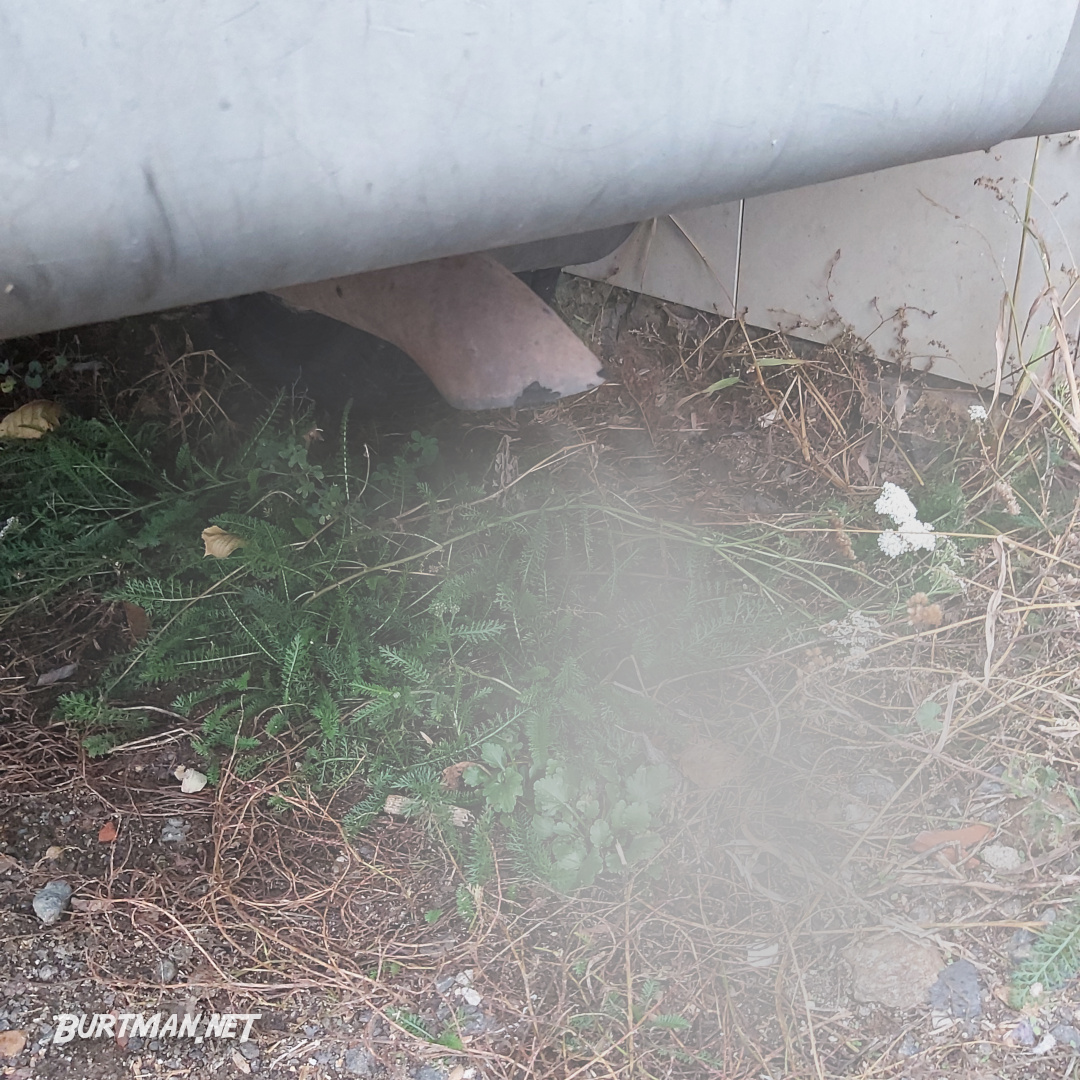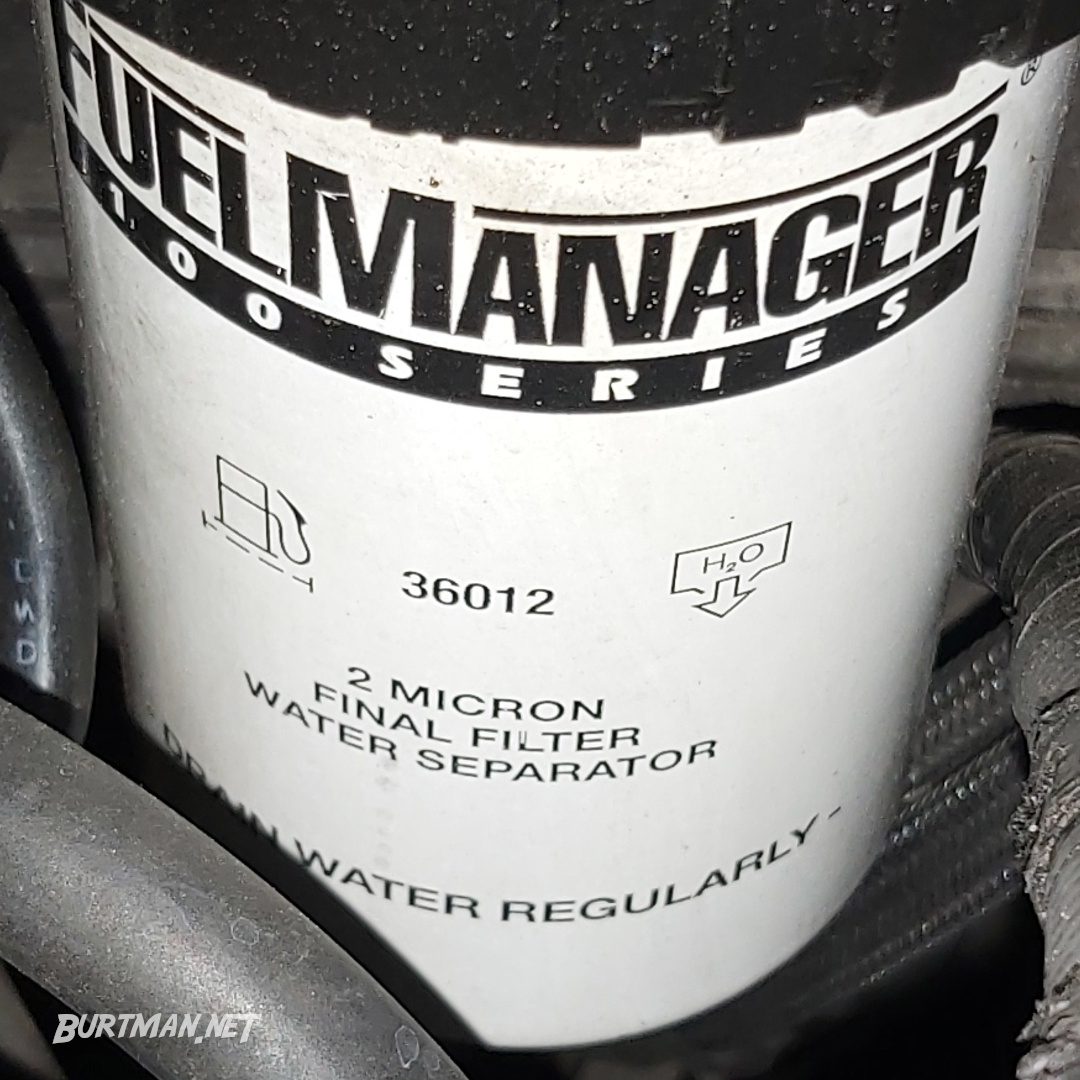Clouds of smoke

Updated:
If you notice a cloud of smoke from the tail pipe when you start your engine, you could have a big problem, but there are many potential causes, so you have to do a bit of work to figure it out.

White smoke indicates water in the fuel system.
Now, you might think it wouldn't be difficult to spot a small volcanic eruption, but if it only happens when you start the engine, you could well be the last to know about it. Think about it; you're in the driving seat, your tail pipe is at the other end of the vehicle, near the ground, and blind spots being what they are... you might only notice it when it gets really bad or someone else tells you about it, and that makes it hard to know exactly when it started.
There can be many causes of a problem like this, ranging from bad fuel to serious engine damage. So how do you know what's going on without wasting a ton of time and money? First things first. Go and take a look at it.
What color is the smoke?
As a general rule, you can usually tell what kind of contaminant you have in your exhaust by its color (click to jump to possible causes).
Blue: Oil
White: Water
Black: Soot / Carbon deposit
When does it appear and disappear (or does it continue)?
If you only see a plume at startup, or in cold weather, you're probably looking at one or more dead glow plugs.
Although technically, a very simple job, changing your glow plugs comes with a serious warning.
If you see smoke every time you start the engine, even when the engine and weather are warm, you could be looking at a faulty air sensor or a blockage in the air hose. Have you changed your air filter in the last few years? If you don't see anything unusual, you might need to check your ECU for error codes.
If the smoke doesn't change or disappear, no matter how long you run the engine, there is probably something leaking into the fuel line. You'll need to answer more questions to narrow it down. Keep reading.
Did you change anything just before this problem started?
If you are seeing smoke the first time you start your engine, following a fuel filter change, for example, you could be sucking air into the fuel feed by not having tightened the new fuel filter enough. Although, if this is the case, you will probably have to crank your engine for quite a while before it starts, as the fuel will not remain in the feed pipe due to the lack of vacuum. If this is the case, remove the fuel filter, fill it to the top with fuel, then refit it and use a Priming Tool to pull fuel into the filter.
If you changed another part just before you saw smoke for the first time, investigate there to make sure the new part is properly fitted and not damaged. Also check that the location where the new part is connected is not damaged or dirty.
Some Possible Causes
Blue smoke: Oil in the fuel
Oil can get into the fuel in several ways, but all of them are bad news.
The engine is full of oil (if you service it properly), so a damaged or worn-out piston ring could allow some of that oil to make it as far as the combustion chamber during operation. This isn't a quick thing to fix, although technically simple, because it requires removal of the cylinder head (and everything connected to and above it). This one is a job for the garage.
Another possibility is a compromised cylinder head gasket. This is an easier fix, but still requires removal of the cylinder head, and for that reason, it's also a garage job. Don't forget to stop at the ATM on the way.
Oil can also get into the fuel supply if one or more of your injectors is loose, depending on their position on the engine, or if any of your valves are mal-adjusted, worn or damaged.
White smoke: Water in the fuel
The most common way water can get into the fuel line, after ruling out obvious blunders like pouring water in the fuel tank (kids might do this without realizing the problems it can cause), is if the engine block is cracked and water is seeping from one of the inner veins. You can check if the water pressure in the coolant reservoir is retained when the engine is cold by slowly unscrewing the filler cap. If the pressure has normalized, there won't be any audible air-rushing sound. That would indicate a leak or crack somewhere in the coolant path.
If you do have a leak in the coolant system, it's going to be difficult to find out where, but a non-destructive quick fix is available and it works very well.
Water may also get into the fuel mix if you don't regularly drain your diesel filter. There's a little nozzle on the bottom of the filter which you can rotate to let filtered water out. The label reads "Drain Water Regularly". I bet you didn't know about that.

I'll get a better picture when my new fuel filter arrives in a week or two.
Black smoke: Soot / Carbon
Carbon deposits can form around the edges of valves, in the EGR pipe (more on that in the next section), and inside the inlet and exhaust manifolds (which can be cleaned out with a rag an a lot of Brake Cleaner). When the engine is running, these deposits can get into the combustion chamber and/or exhaust gas, causing a black, sooty exhaust cloud.
There may be other causes of black smoke, including fuel contamination, bad air:fuel ratio, turbo failure and damaged or mis-seated air filter.
Bad or contaminated fuel could burn at a sub-optimal temperature, or contain microscopic particles that burn off with a sooty color. Likewise, a very old fuel filter may be failing to remove all contaminants, and could even reintroduce previously filtered particles back into the fuel supply. Similarly, if your air filter is damaged or not seated properly, particles from the air outside could be sucked right into the engine and ignited. These problems can be checked and fixed easily.
If your vehicle has a turbocharger, black smoke can appear because of broken turbo seals or because the turbine itself is worn and may need replacing. This is easy to diagnose by removing the hoses connected to the turbo and wiping the inside edges with a rag to check for oil. If the turbo itself is coming to the end of its useful life, start saving because a new turbo can be very costly. A failing turbo is often associated with a loud whining sound during use, caused by worn bearings.
If none of these seem to be the cause, and your van has an older petrol engine with a carburetor, you might need to manually adjust the fuel mixture screw in order to make the fuel mix more lean. Try it. If it doesn't help, it's quick and simple to revert, and old engines give you real-time feedback when they are struggling with too much or too little fuel.
Can't Tell?
If you're not sure whether you see black or blue smoke (it can be hard to tell), consider you might have the same problem I did, a
This article should get you close to finding and repairing your problem, but it's not an exhaustive list. If you have anything to add or correct, please put it in the comments below to help others.
Sign In To Leave A Comment
There are no comments marked as public for this item.
Stay Up To Date





 Diving Deeper
Diving Deeper Read around 2,300 times
Read around 2,300 times For Everyone
For Everyone